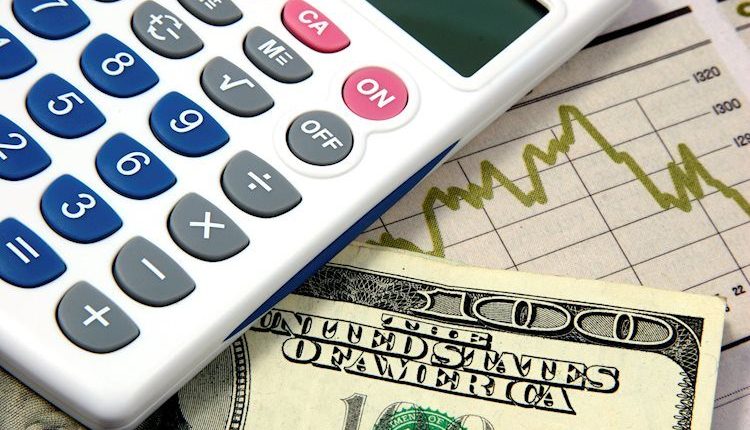- The US Dollar cleared daily gains despite better-than-expected Retail Sales and Industrial Production figures from September.
- A positive market and risk-on flows weakened the USD.
- The US Treasury yields on the 2, 5, and 10-year bonds are approaching two-week highs, limiting the downside potential.
- The odds of a hike by the Fed in December rose to 42% according to the CME FedWatch tool.
The US Dollar (USD) measured by the US Dollar DXY Index rose to a high of 106.52 and then declined towards 106.15, below the 20-day Simple Moving Average (SMA) after the release of September’s Retail Sales and Industrial Production figures from the US. Both reports came in higher than expected, but risk-on flows dominate the market which isn’t allowing the green currency to gather momentum. However, higher US Treasury yields and rising hawkish bets on the Federal Reserve (Fed) may limit the downside for the USD.
The United State’s economic activity is still holding strong despite the Federal Reserve’s aggressive manoeuvres, and inflation figures revealed that the Consumer Price Index (CPI) slightly accelerated in September.
As Jerome Powell stated during the press conference from September’s decision, the Fed is still ready to resume hiking as long as data justifies another hike so this current outlook is making investors gear up for one last hike in 2023.
Daily Digest Market Movers: US Dollar continues weakening despite positive economic figures
- The US Dollar DXY rose to a high of 106.52 and then settled around 106.15, paring back its daily gains.
- US retail Sales came in at 0.7% MoM in September, higher than the 0.3% expected but decelerated from 0.8% in the previous month.
- Industrial Production rose by 0.3% MoM in the same month, vs the 0.0% expected.
- US yields continue rising, and the 2, 5 and 10-year rates rose to 5.18%, 4.84% and 4.83% respectively, with all three seeing more than 1.50% increases.
- According to the CME FedWatch tool, the odds of a 25 bps hike in the December meeting rose to nearly 42%.
- The Federal Reserve’s Beige Book, released on Wednesday, will provide further clues on the outlook for the US economy.
Technical analysis: US Dollar Index’s bears breach the 20-day SMA but 105.50 is the make-or-break level
The DXY index failed to hold on to its early bullish momentum which took it to a high of around 106.52 before declining to negative territory at around 106.05. Nevertheless, the index arguably remains in a bullish trend overall, holding above the key 200 and 100-day Simple Moving Averages (SMA).
Indicators on the daily chart point towards a strengthening bearish momentum, with the Moving Average Convergence Divergence (MACD) printing red bars after performing a bearish cross on October 6.
As the bulls have failed to defend the 20-day SMA, more downside may be on the horizon although 105.50 low is the key ‘line in the sand’ that would need to be crossed to turn the outlook particularly bearish.
Supports: 106.00, 105.80, 105.50.
Resistances: 106.20 (20-day SMA), 106.55, 107.00.
US Dollar FAQs
The US Dollar (USD) is the official currency of the United States of America, and the ‘de facto’ currency of a significant number of other countries where it is found in circulation alongside local notes. It is the most heavily traded currency in the world, accounting for over 88% of all global foreign exchange turnover, or an average of $6.6 trillion in transactions per day, according to data from 2022.
Following the second world war, the USD took over from the British Pound as the world’s reserve currency. For most of its history, the US Dollar was backed by Gold, until the Bretton Woods Agreement in 1971 when the Gold Standard went away.
The most important single factor impacting on the value of the US Dollar is monetary policy, which is shaped by the Federal Reserve (Fed). The Fed has two mandates: to achieve price stability (control inflation) and foster full employment. Its primary tool to achieve these two goals is by adjusting interest rates.
When prices are rising too quickly and inflation is above the Fed’s 2% target, the Fed will raise rates, which helps the USD value. When inflation falls below 2% or the Unemployment Rate is too high, the Fed may lower interest rates, which weighs on the Greenback.
In extreme situations, the Federal Reserve can also print more Dollars and enact quantitative easing (QE). QE is the process by which the Fed substantially increases the flow of credit in a stuck financial system.
It is a non-standard policy measure used when credit has dried up because banks will not lend to each other (out of the fear of counterparty default). It is a last resort when simply lowering interest rates is unlikely to achieve the necessary result. It was the Fed’s weapon of choice to combat the credit crunch that occurred during the Great Financial Crisis in 2008. It involves the Fed printing more Dollars and using them to buy US government bonds predominantly from financial institutions. QE usually leads to a weaker US Dollar.
Quantitative tightening (QT) is the reverse process whereby the Federal Reserve stops buying bonds from financial institutions and does not reinvest the principal from the bonds it holds maturing in new purchases. It is usually positive for the US Dollar.
Read the full article here

